Table of Content
Since 1871, the Élysée Palace has served as the designated official residence of the President of the French Republic. Emmanuel Macron, who assumed the presidency in 2017, currently resides in this prestigious palace. Known for its luxurious decor and unique furnishings, the Élysée Palace stands as a symbol of prestige in Paris. Explore the intricacies of this splendid architectural marvel, a residence that holds profound historical, cultural, and political significance for the country.
French President house: Address
Situated at 55 Rue du Faubourg Saint-Honoré, 75008, Paris, France, the Élysée Palace serves as the official residence of the French President. This magnificent residence boasts a total of three floors, adding to its grandeur and historical significance. Its main building is framed by two separate wings.
French President house: Architecture
The Élysée Palace, which serves as the official residence of the French President, derives its name from the Elysian Fields—a concept in Greek mythology symbolizing the land of the blessed dead. Architect Armand Claude Mollet designed the palace, embodying the timeless elegance of the Classic Louis architectural style. Recognized for its captivating architecture and expansive grounds, the Élysée Palace stands as one of the most prestigious residences in Paris.
The influence of Empire and Napoleon styles from the 19th century is evident in the building's additions, contributing to its historical significance. The palace encompasses extensive gardens and cottages, creating a harmonious blend of nature and architecture. The majestic courtyard imparts grandeur to this palatial mansion, with the core building constructed in the Neoclassical style, further enhancing its architectural splendor.

French President house: Interiors
The main entrance of the Élysée Palace, situated at 55 Rue du Faubourg-St-Honoré, reveals the esteemed Cour d’Honneur. Linking the gardens to Avenue Gabriel, which parallels the lower stretch of the Avenue des Champs-Elysées, the Grille du Coq stands out as a notable feature. Every room within the palace offers picturesque views of the gardens, with the exception of the Vestibule d’ Honneur, which opens onto the Cour d’Honneur. Here are some key highlights of the Élysée Palace.
Élysée Palace: Cour d’Honneur and Vestibule d’Honneur (The Grand Entrance Hall)
Dignitaries, heads of state, ministers and official guests are welcomed into the Élysée Palace through the distinguished Cour d’Honneur, where they are greeted by the president in the Vestibule D’Honneur. The Hall of Honour, a vast and luminous space, is adorned with white and red marble tiles, Doric pilasters and a striking sculpture titled ‘Tribute to the French Revolution’ by Arman, adding to the palace’s architectural splendor.
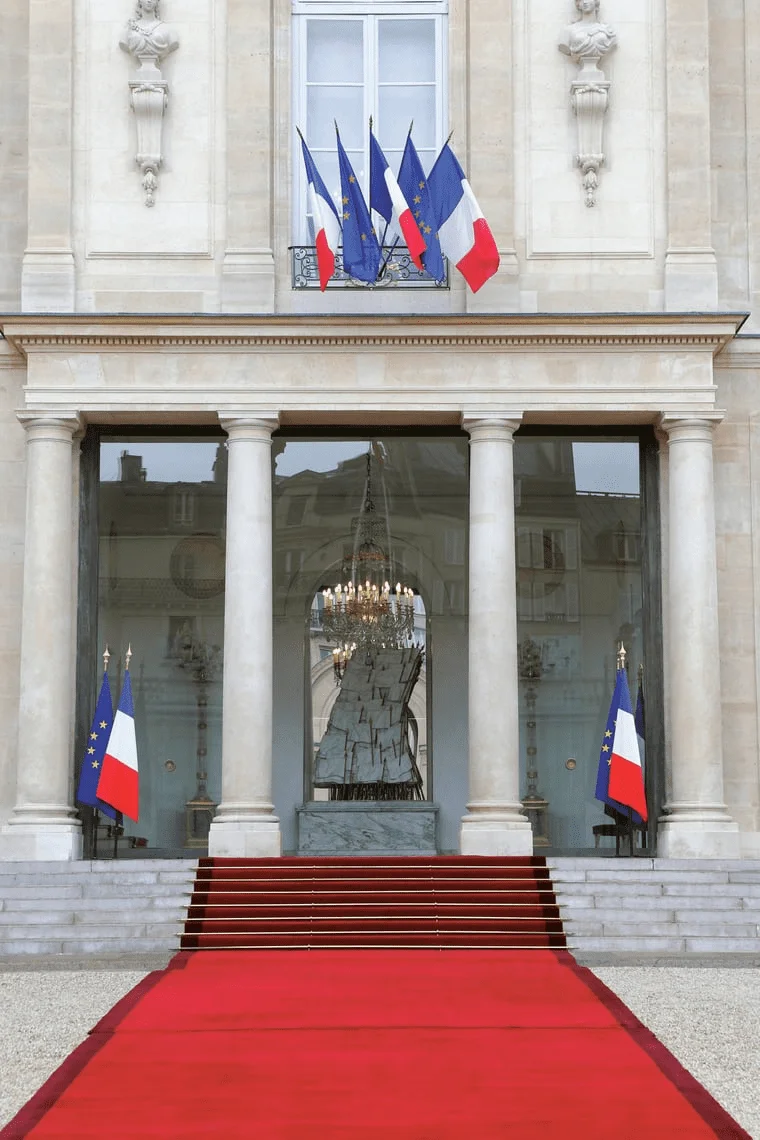
Élysée Palace: Salon Doré (Golden Room)
The Salon Doré, functioning as the official study of the president at Élysée Palace, undeniably lives up to its name. Positioned at the heart of the mansion, this room has impeccably maintained its decor, crafted in 1861 by the painter Jean-Louis Gogon for Empress Eugénie. Adorned with Gobelins tapestries, carpets from the Manufacture Nationale de la Savonnerie, a crystal chandelier from the Napoleon III era, and a chest of drawers designed by André Boulle, the room's focal point is the Louis XV style desk—a masterpiece created by the cabinetmaker Charles Cressent in the 18th century.

Élysée Palace: Salle des Fêtes (Banqueting Hall)
The Salle des Fêtes is the opulent Banqueting Hall situated in the western wing of the Elysée Palace. It has been utilized for official ceremonies, significant state dinners, and receptions. In 1896, Guillaume Dubufe painted the panels of the coffered ceiling, while the Manufacture Nationale des Gobelins produced the 18th-century tapestries adorning the walls. The hall is characterized by expansive French windows that allow ample natural light, creating an airy ambiance.
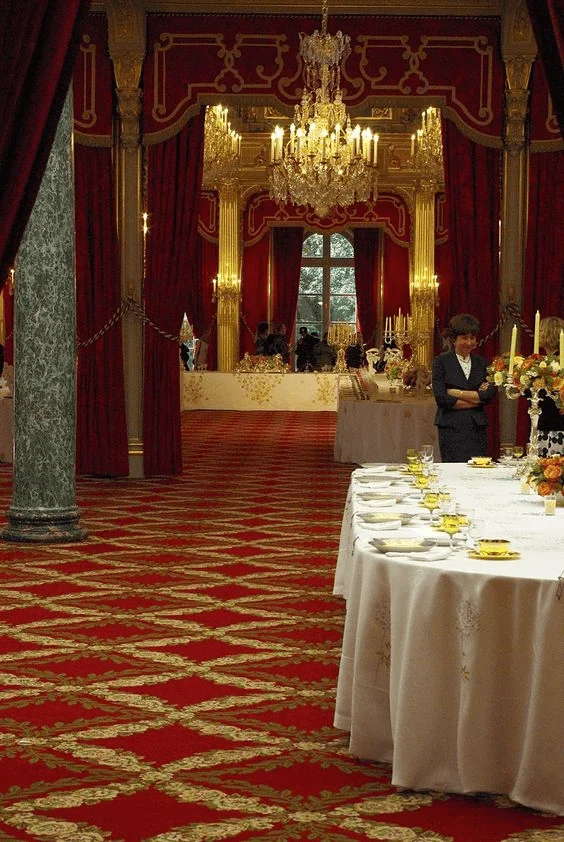
Élysée Palace: Jardin d’Hiver (Winter Garden)
Linked to the Salle des Fêtes, the Winter Garden at Élysée Palace is a greenhouse built in 1881 with the specific purpose of cultivating exotic plants. Underwent complete refurbishment in 1976 and 1984, the room showcases a substantial tapestry depicting a scene from the Bible on its western wall. The crystal chandeliers in the Winter Garden, identical to those in the Salle des Fêtes and Salon Napoleon III, have origins in the 19th century. Currently, the Winter Garden serves for official receptions and occasional working meetings.

Élysée Palace: Salon Murat (Murat Room)
The Salon Murat in Élysée Palace has hosted Conseil des Ministres (Council of Ministers) meetings since the presidency of George Pompidou. Every Wednesday morning, the council gathers around the spacious table that dominates the entire room. In these crucial sessions, the president occupies a central position, facing the prime minister. Historically, the room was decorated in tribute to Joachim Murat, Napoleon I’s brother-in-law.

Élysée Palace: Salon des Ambassadeurs (Ambassadors Room)
Formerly Murat’s ballroom, the Salon des Ambassadeurs at Élysée Palace is currently employed by the president for diplomatic meetings, enhancing its historical importance. This room stands out as one of the most prestigious within the palace. Notable features include a clock on the fireplace with a dial indicating the month, moon phases, and zodiac signs. The salon is further embellished with a bronze statuette of the Roman emperor Marcus Aurelius, a carpet woven in 1990 within the workshops of the Manufacture Nationale de la Savonnerie, and a chandelier dating back to the Bourbon Restoration.
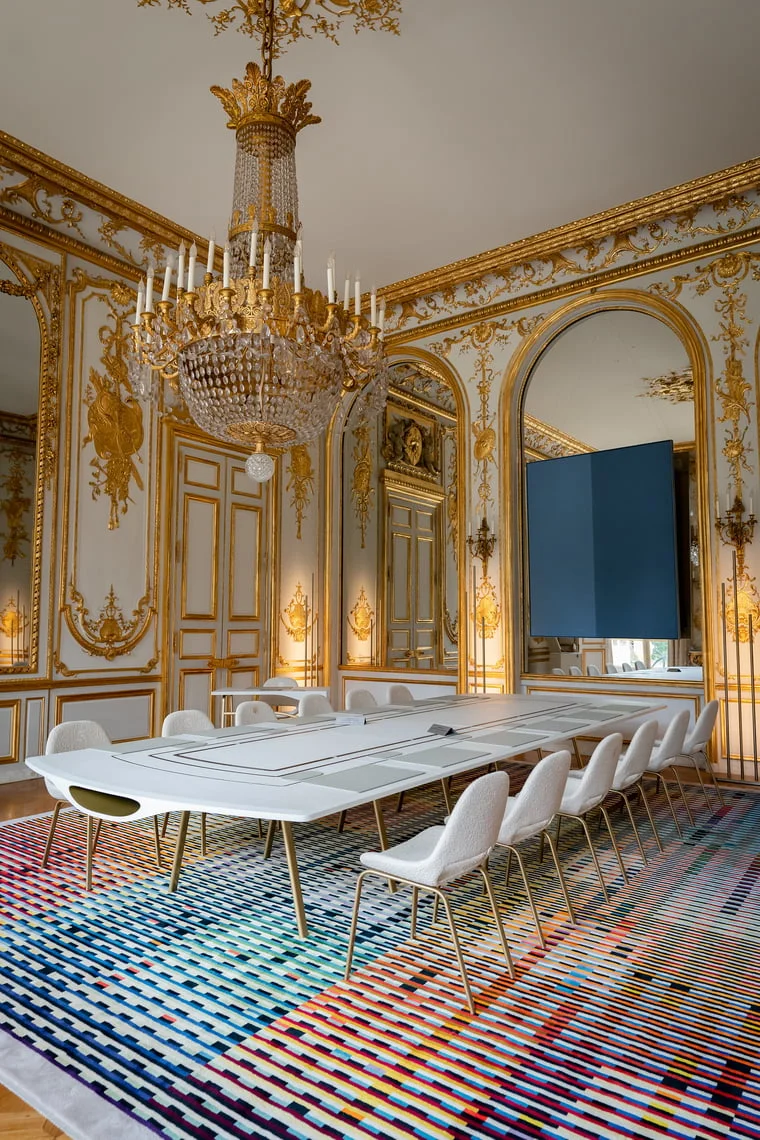
Élysée Palace: Salon des Aides de Camp
The Salon des Aides-de-Camp at Élysée Palace, now designated for hosting guests, maintains its 1720s decoration from the era of the Count of Évreux. Despite a 19th-century restoration, the room has retained its original charm, showcasing woodwork embellished with feminine masks and mirrors. Overdoors, commissioned by Emperor Napoleon III in 1859 from painter Charles Landelle, depict allegories of the elements: Earth, water, fire, and air, as well as discord and peace. A comprehensive restoration of the room's decoration was carried out in the summer of 2018, with furnishings reviewed by the Mobilier National to ensure appropriateness. The suite, designed by Thierry Lemaire, seamlessly integrates with its historic surroundings.
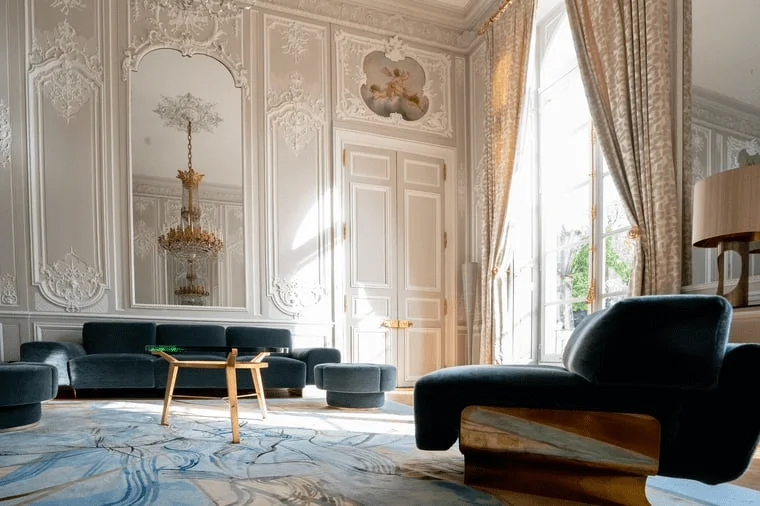
Élysée Palace: Gardens
The gardens of Élysée Palace were initially designed in the French style, with intertwined greenery separated by rectangular gravel pathways, covering a larger area than their current size. The Marquise de Pompadour added a touch of rustic fantasy to the gardens, incorporating features like a grotto, a maze, a waterfall, and even animals. By the late 18th century, the Duchess de Bourbon transformed the gardens into an English-style setting. Flowerbeds and pathways were replaced by sweeping lawns, featuring winding paths, a theater of greenery, an irregularly shaped pond, and a rocky bridge. She introduced various attractions such as a swing, ring jousting, and rowing boats, eventually opening the gardens to the public. Throughout the 19th century, these attractions gradually disappeared, and the gardens adopted their current appearance, showcasing a blend of French and English styles, including features like knot garden box hedges in front of the private wing.

Also Read: Inside the Yash Rocky House - Location, Price, Photos and More

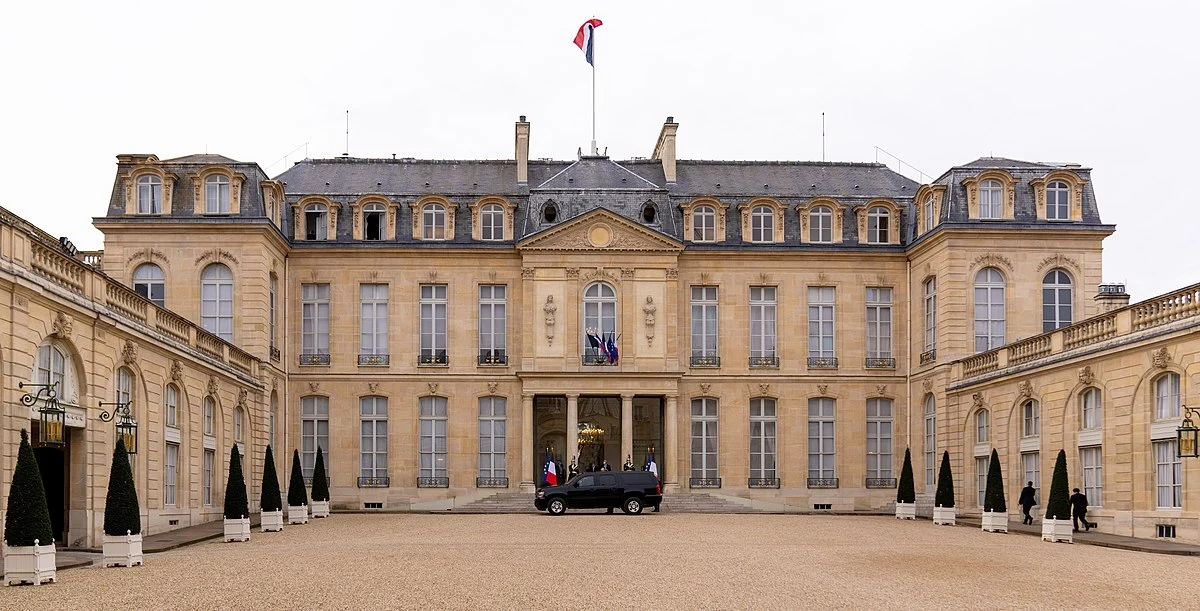





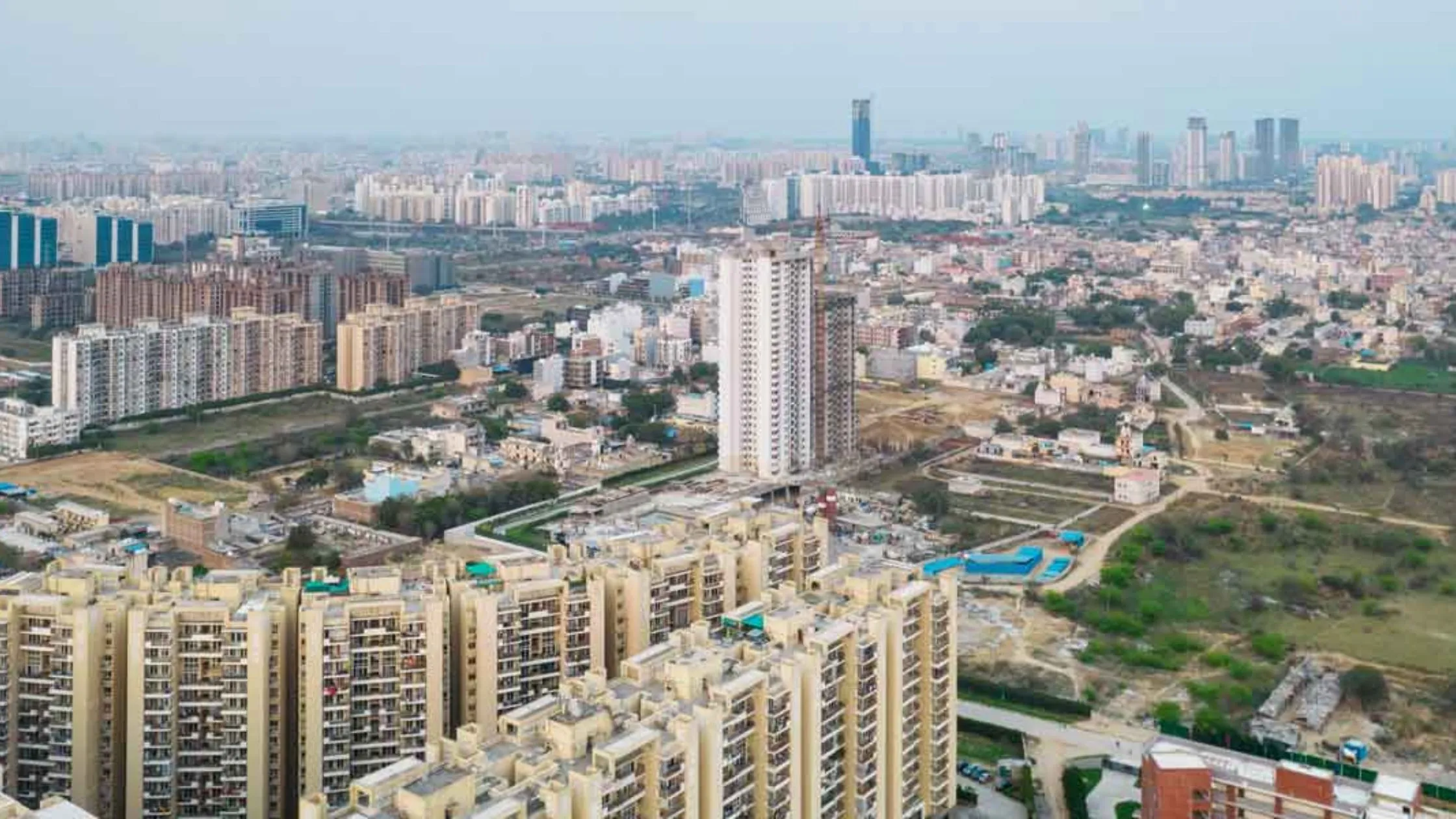



Ans 1. The Élysée Palace, the official residence of the President of the French Republic, is situated at 55 Rue du Faubourg Saint-Honoré, 75008, Paris, France.
Ans 2. The Élysée Palace boasts three floors and is designed in the Classic Louis style of architecture. Architect Armand Claude Mollet played a significant role in shaping its captivating design.
Ans 3. Dignitaries, heads of state, and official guests enter the Élysée Palace through the distinguished Cour d’Honneur. The president welcomes them in the Vestibule D’Honneur, a vast and luminous space adorned with white and red marble tiles, Doric pilasters, and a sculpture titled ‘Tribute to the French Revolution’ by Arman.
Ans 4. While the Élysée Palace is primarily the official residence of the president, certain rooms have historical and cultural significance. Notable rooms include the Salon Doré (Golden Room), Salle des Fêtes (Banqueting Hall), Winter Garden, Salon Murat, Salon des Ambassadeurs, and Salon des Aides-de-Camp.
Ans 5. Originally designed in the French style with interlaced greenery, the gardens underwent transformations by the Marquise de Pompadour and later the Duchess de Bourbon. Today, they reflect a blend of French and English styles, featuring knot garden box hedges and showcasing a variety of elements.